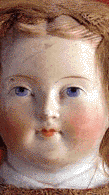 |
||
  |
||
|
|
Evaluating Eyewitness ReportsIntroductionThis lesson offers students experience in drawing historical meaning from eyewitness accounts that present a range of different perspectives. Students begin with a case study including alternative reports of a single event: the Great Chicago Fire of 1871. Students compare two newspaper reports on the fire and two memoirs of the fire written many decades later, with an eye on how these accounts complement and compete with one another, and how these sources can be used to draw historical meaning from them. Students then apply the lessons learned in their investigation of the eyewitness accounts of the Chicago fire by considering a unique eyewitness account: the diary kept by a Confederate girl when her Tennessee town was occupied by Union troops during the Civil War.Guiding Question
Learning ObjectivesWhen students have completed this lesson they will have:
Preparing to Teach This Lesson
Suggested Activities1. Extra! Extra! Fire Destroys Chicago! : Analyzing Newspaper Accounts2. Right Before My Eyes: Analyzing Eyewitness Accounts1. Extra! Extra! Fire Destroys Chicago! : Analyzing Newspaper Accounts Distribute copies of the Written Document Analysis Worksheet, from the website Digital Classroom, to the class. Discuss with students how they can use the worksheet to gather together various kinds of information in an historical document, including facts about the document itself (date, author, audience, etc.) and facts about the past. Explain that in this lesson students will use the worksheet to examine a variety of historical eyewitness reports, first comparing several reports of a single dramatic event, then evaluating the unique account of a different, more complex historical situation. Have students read the following two newspaper accounts of the Great Chicago Fire of 1871, The Great Chicago Fire and the Web of Memory. The first reading is The Tribune Reports to Chicago on Its Own Destruction, and is a front page report from the Chicago Tribune published two days after the fire, on October 11, 1871. The second account is an excerpt from an article that was published by the Chicago Evening Post on October 17, 1871. Once students have finished reading the two newspaper articles, have them work individually or in groups to analyze these two reports using the Written Document Analysis Worksheet. Compare their responses to selected sections of the worksheet in a class discussion. Have students work on answering the following questions, which are also available as a Student Launchpad:
2. Right Before My Eyes: Analyzing Eyewitness Accounts Next have students read two personal accounts of the Chicago Fire included in the collection of the The Great Chicago Fire and the Web of Memory, which includes recollections from 21 survivors of the fire. The narratives of Bessie Bradwell, written in 1926, and Mary Kehoe, written in 1942, form convenient pair from this anthology. Both were teenagers at the time of the fire but they came from different social backgrounds, Bessie Bradwell was the daughter of a judge while Mary Kehoe was from the working class. In this exercise students will be asked to contemplate the strengths, weaknesses, and differences of these accounts. As in the previous activity, have students work individually or in groups to analyze these two eyewitness accounts using the Written Document Analysis Worksheet. Compare their responses to selected sections of the worksheet in a class discussion. Ask the students to compare these personal recollections of the fire with the newspaper reports written within days of the event.
Next, have students explore the impact of reflection and memory on these two narratives, written decades after the event they describe. Ask students to answer the following questions. They should provide examples of all the evidence they find within the narratives that answer these questions, which are also available as a Student Launchpad:
AssessmentHave students prepare a researcher's report on the four firsthand accounts of the Chicago Fire that they have read in the previous activities, explaining what they might contribute to three different histories of the event. This should include:
If you have time you might have students put their new analytic skills to work by having them collect eyewitness reports from present-day newspapers or conduct their own interviews of family members who have witnessed some significant event (for example, an athletic competition, a natural disaster, a public celebration, the coming of some new technology like the Internet). Have students use the Written Document Analysis Worksheet to evaluate their eyewitness accounts and then prepare a researcher's report explaining how their document might be used by some future historian. Selected EDSITEment Websites
Standards Alignment View your state’s standards |
||||||||||||||||||||||||||||||||||||||||||||||||||||||||||||||||||||
  |
||
| EDSITEment contains a variety of links to other websites and references to resources available through government, nonprofit, and commercial entities. These links and references are provided solely for informational purposes and the convenience of the user. Their inclusion does not constitute an endorsement. For more information, please click the Disclaimer icon. | ||
| Disclaimer | Conditions of Use | Privacy Policy Search
| Site
Map | Contact
Us | ||
